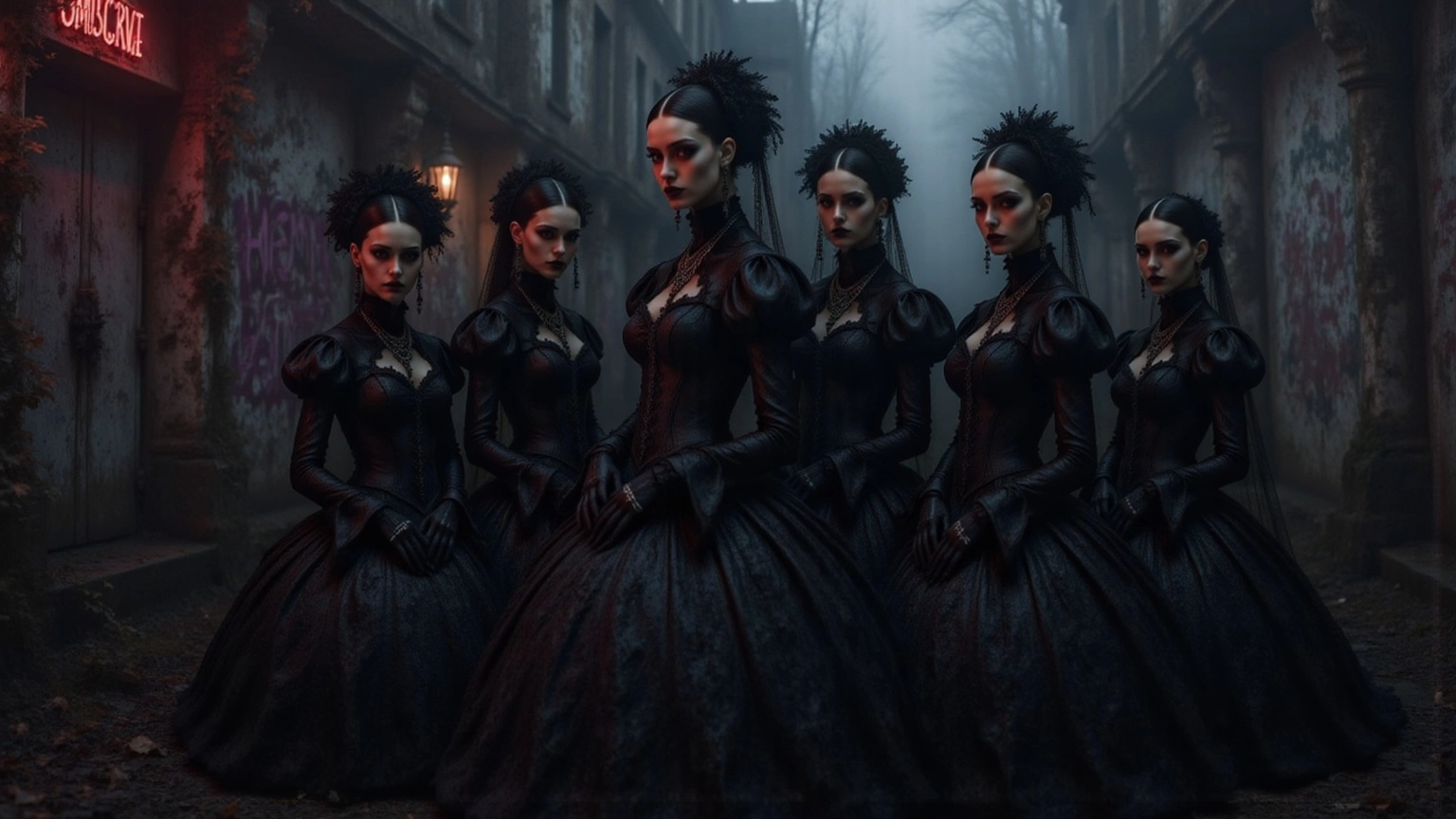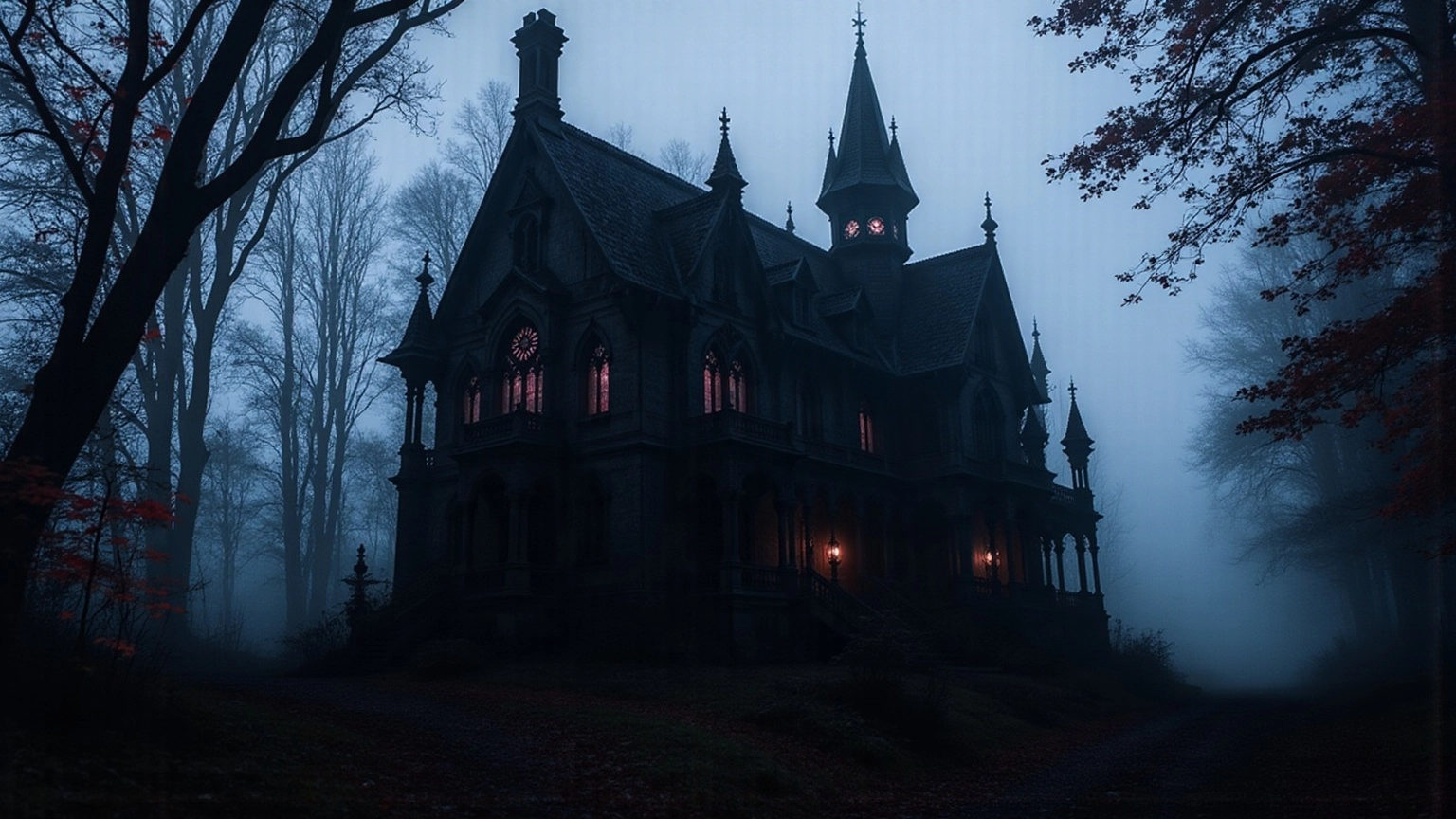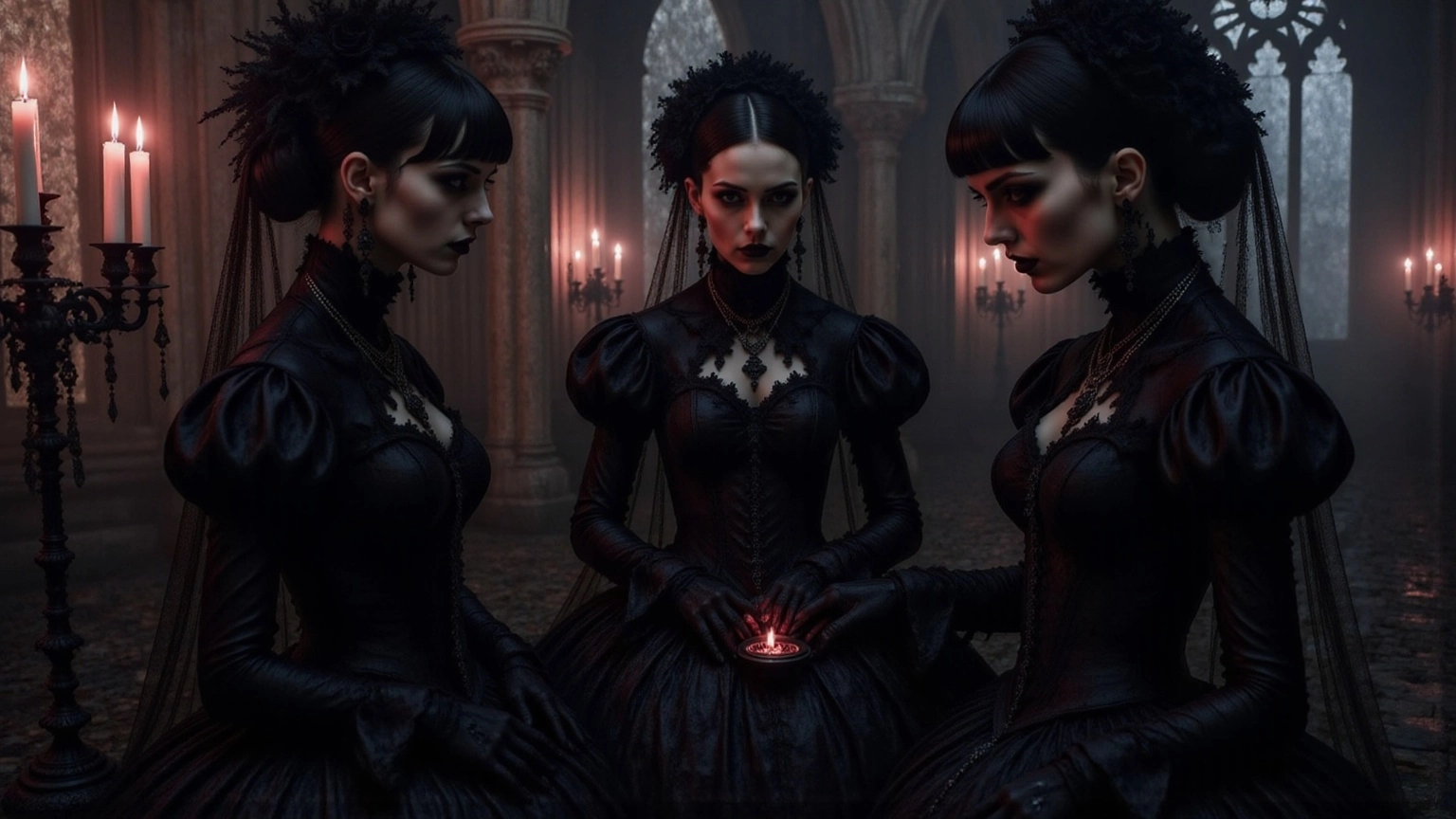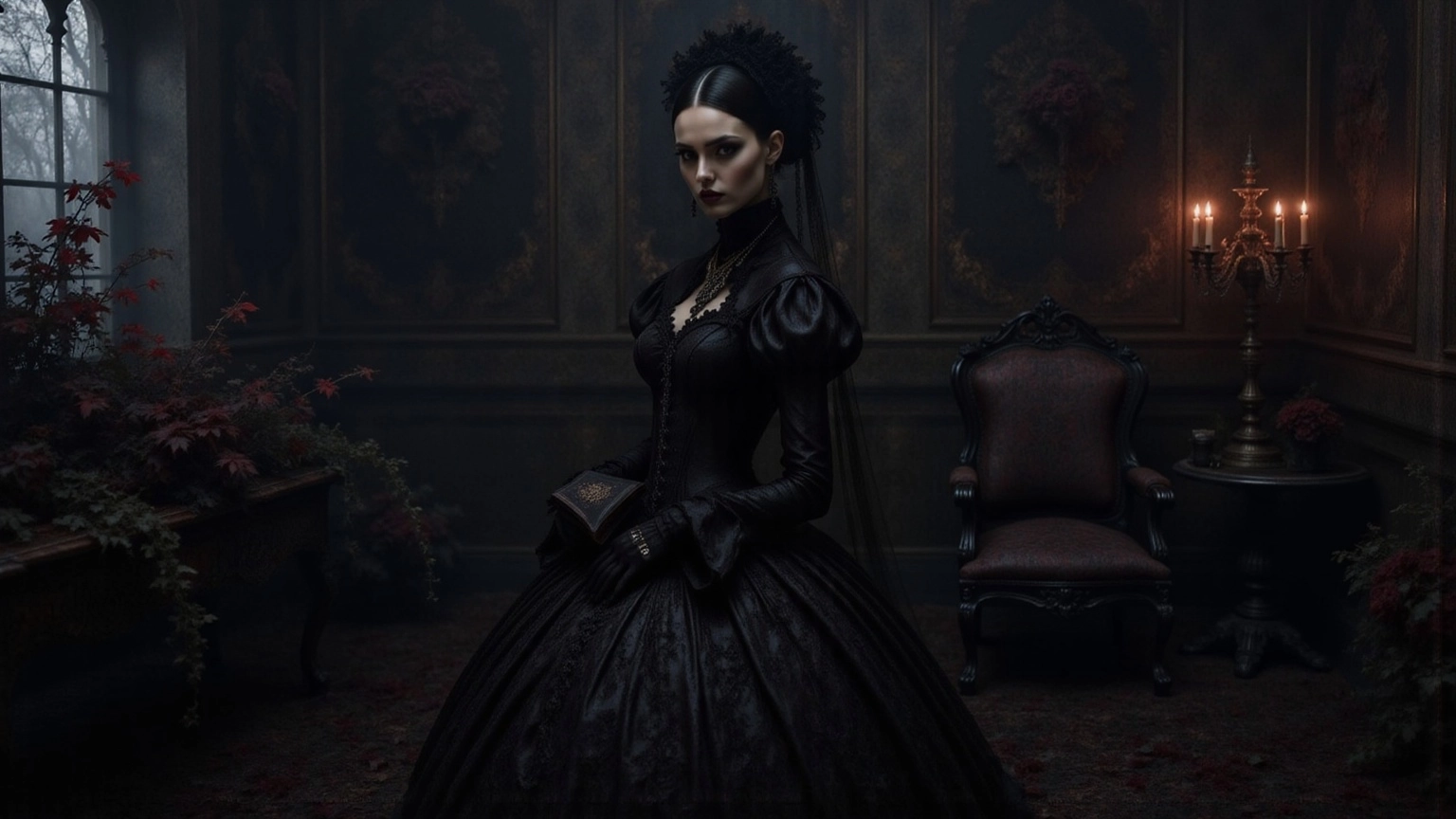
What Do Goths Believe In? Exploring Core Values and Beliefs
Share
Overview
Goths revel in their individuality, embracing self-expression like a dark shroud. They dance with death, existentialism, and social justice, intertwining these themes into their very essence. Picture this: the gothic subculture, a tapestry woven with threads of personal authenticity and community connection, pulsates through music, literature, and fashion. Each artistic expression is a reflection of their core values and beliefs, daring you to look deeper.
What does it mean to truly be yourself in a world that often demands conformity? The gothic narrative challenges you to explore the shadows, to find beauty in the macabre. It’s not just a style; it’s a statement. The rhythm of their existence is a bold assertion of identity, beckoning you to join the dance of self-discovery.
Let the allure of the gothic pull you in, as you uncover the layers of meaning behind every note, every word, every stitch. This is more than just a subculture; it’s a movement, a call to arms for those who dare to defy the ordinary. Embrace the darkness, and let it guide you to a celebration of life that’s unapologetically authentic.
Introduction
The gothic subculture, steeped in a rich history and dark aesthetics, beckons to those who find beauty in shadows. At its core lies a daring exploration of individuality, creativity, and a unique lens on life’s somber themes. But as this subculture evolves, we must ask: what do goths truly believe, and how do these beliefs seep into their art, music, and daily lives?
Delving into the core values and philosophical underpinnings of goth culture reveals a tapestry woven with threads of rebellion, existential inquiry, and a fierce commitment to social justice. This hauntingly beautiful world invites you to uncover its depths, challenging your perceptions and igniting your curiosity. Are you ready to explore?
Defining the Gothic Subculture
The dark aesthetic movement emerged in the late 1970s and early 1980s, a bold rebellion in the realms of music and art. Picture this: dark clothing, dramatic makeup, and an unapologetic embrace of the macabre. This alternative scene intertwines with dark rock music, literature, and art, diving deep into themes of darkness, romance, and existentialism. At its core, this movement stands as a defiant response to mainstream culture, carving out a sanctuary for the isolated and misunderstood.
It’s a celebration of individuality and creativity, a fascination with life’s darker shades. Here, a rich tapestry of ideals and values thrives, which leads to a deeper understanding of what do goths believe in among its followers. Are you drawn to the shadows? Do you find beauty in the bleak? The dark aesthetic movement invites you to explore its depths, challenging perceptions and igniting a passion for the unconventional.

Historical Context and Evolution of Gothic Beliefs
Dark beliefs? They whisper from the shadows of the Romantic movement, emerging in the late 18th century, where emotion, nature, and the sublime collided. This era thrived on the supernatural, probing the depths of human feelings, laying the groundwork for a dark aesthetic that would haunt the ages. The 19th century saw a resurgence—a revival in architecture and literature—where Mary Shelley's 'Frankenstein' and Bram Stoker's 'Dracula' ensnared the public's imagination, weaving tales that linger in the dark corners of our minds.
As the 20th century crept forward, a dark subculture began to take shape, molded by the raw energy of punk rock and countercultural movements. Today, these traditions evolve, entwining contemporary spirituality, environmentalism, and social justice, reflecting the diverse passions of those who embrace the shadows and exploring what do goths believe in. Are you ready to delve deeper into this gothic tapestry, where every thread tells a story of rebellion and reflection?

Core Beliefs and Values of Goths
What do goths believe in centers around a fierce celebration of individuality and self-expression. Goths crave authenticity, daring each member to unveil their true selves, unshackled by judgment. This subculture pulses with a sense of community, weaving connections among those who share similar passions and experiences.
Death and the afterlife? They’re not just morbid fascinations; they’re vital threads in the tapestry of human experience, inviting a deeper understanding of life itself. This perspective nudges followers to confront their mortality and delve into what do goths believe in regarding existential musings.
But there’s more—many goths stand as fierce advocates for social justice and environmental awareness, driven by a relentless commitment to forge a more equitable and sustainable world.

Gothic Beliefs and Their Artistic Expressions
Gothic beliefs erupt in a kaleidoscope of artistic forms—music, literature, visual arts, and fashion. Gothic rock music, with its haunting, atmospheric sound, serves as a potent vessel for channeling the raw emotions and dark concepts that pulse at the heart of this subculture. Bands like Bauhaus and Siouxsie and the Banshees are icons, each note a whisper in the shadows, inspiring legions of goths to embrace their inner darkness.
In literature, the shadows deepen, revealing tales steeped in the supernatural, the macabre, and the twisted intricacies of the human psyche. Words dance like specters, drawing readers into realms where every sentence drips with gothic allure. Visual arts—photography, painting—mirror this dark aesthetic, wielding imagery and symbolism to evoke visceral emotions that linger long after the last glance.
And then there’s fashion, the armor of the dark identity. Distinctive styles weave together threads of Victorian elegance, punk rebellion, and romantic mystique. Each garment tells a story, a declaration of individuality wrapped in layers of intrigue. Together, these artistic expressions forge a rich cultural tapestry, illustrating what goths believe in and the core values of the gothic subculture. Are you ready to step into the shadows and explore this hauntingly beautiful world?

Conclusion
The gothic subculture is a daring exploration of individuality, creativity, and a haunting perspective on life and death. At its core, goth culture beckons followers to unveil their true selves, reveling in the beauty that lurks within darkness and the unconventional. This movement transcends mere aesthetics; it weaves a rich tapestry of beliefs and values that defy societal norms and ignite the flames of self-discovery.
Key insights throughout this narrative unveil how gothic beliefs have morphed from the Romantic movement into contemporary art and activism. The subculture intertwines existentialism, social justice, and environmentalism, crafting a community that thrives on connection and authenticity. Artistic expressions—music, literature, fashion—serve as potent conduits for these beliefs, allowing goths to articulate their experiences and emotions in ways that resonate deeply with themselves and the world around them.
Ultimately, grasping the significance of what goths believe transcends mere curiosity; it demands recognition of the diverse narratives that shape the human experience. Embracing the gothic ethos invites a broader appreciation for individuality and the complexities of life, urging all to plunge into their own shadows and unearth beauty in the depths.
Frequently Asked Questions
What is the Gothic subculture?
The Gothic subculture is a dark aesthetic movement that emerged in the late 1970s and early 1980s, characterized by dark clothing, dramatic makeup, and an embrace of macabre themes in music, literature, and art.
What themes are prevalent in Gothic culture?
Gothic culture often explores themes of darkness, romance, and existentialism, providing a platform for creativity and individuality.
How does the Gothic subculture respond to mainstream culture?
The Gothic subculture serves as a defiant response to mainstream culture, creating a sanctuary for those who feel isolated or misunderstood.
What values do followers of the Gothic subculture hold?
Followers of the Gothic subculture celebrate individuality and creativity, fostering a deeper understanding of life's darker aspects.
What kind of aesthetic does the Gothic subculture embrace?
The Gothic subculture embraces a dark aesthetic, inviting individuals to find beauty in bleakness and explore unconventional perceptions.
